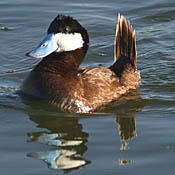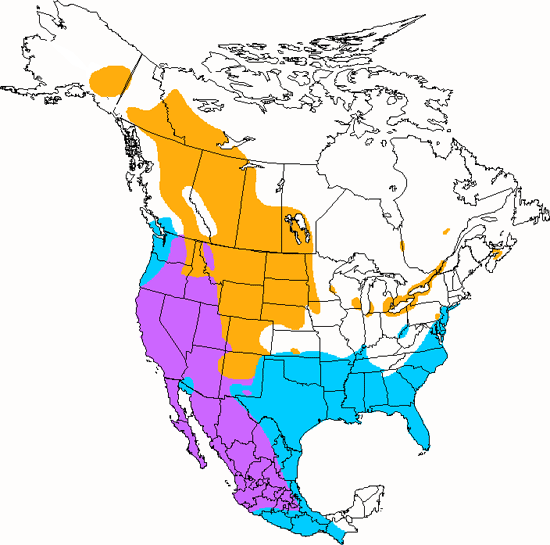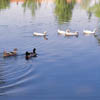Ruddy Duck
Oxyura jamaicensis

Duck Like

Length: 15 in. (38 cm )
This species is one of the few ducks in North America, in which the males have a different winter and breeding plumage. Typically these diving ducks swim on the water\'s surface with their tails raised into the air. They feed underwater on insect larvae, other aquatic invertebrates, and aquatic vegetation. The nest is constructed of aquatic grass and reeds and placed at the base of tall reeds. Frequently females place their eggs in the nests of other duck, coot and rail species and become brood parasites.
The four-digit banding code is RUDU.
Bibliographic details:
- Article: Ruddy Duck
- Author(s): Dr. Biology
- Publisher: Arizona State University School of Life Sciences Ask A Biologist
- Site name: ASU - Ask A Biologist
- Date published: 13 Jul, 2017
- Date accessed:
- Link: https://askabiologist.asu.edu/activities/bird/ruddy-duck
APA Style
Dr. Biology. (Thu, 07/13/2017 - 15:37). Ruddy Duck. ASU - Ask A Biologist. Retrieved from https://askabiologist.asu.edu/activities/bird/ruddy-duck
Chicago Manual of Style
Dr. Biology. "Ruddy Duck". ASU - Ask A Biologist. 13 Jul 2017. https://askabiologist.asu.edu/activities/bird/ruddy-duck
Dr. Biology. "Ruddy Duck". ASU - Ask A Biologist. 13 Jul 2017. ASU - Ask A Biologist, Web. https://askabiologist.asu.edu/activities/bird/ruddy-duck
MLA 2017 Style
Be Part of
Ask A Biologist
By volunteering, or simply sending us feedback on the site. Scientists, teachers, writers, illustrators, and translators are all important to the program. If you are interested in helping with the website we have a Volunteers page to get the process started.










